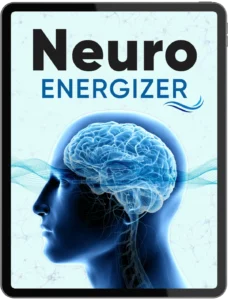Relationships are meant to bring love, joy, and companionship. But when overthinking creeps in, even the happiest connection can feel heavy. Many people find themselves replaying conversations in their heads, second-guessing their partner’s intentions, or worrying about the future. If this sounds familiar, you are not alone. Learning how to stop overthinking in a relationship is one of the most valuable skills you can develop to protect your mental health and nurture your bond.
In this comprehensive guide, we will explore why overthinking happens, how it affects your relationship, and proven strategies you can apply starting today to break the cycle of anxious thoughts.
Why Do We Overthink in Relationships?
Before tackling solutions, it’s important to understand the root causes. Overthinking in relationships often stems from:
- Fear of abandonment: Worrying your partner might leave or stop loving you.
- Past experiences: Carrying trust issues from previous relationships.
- Low self-esteem: Doubting your worth and questioning whether you deserve love.
- Perfectionism: Believing every detail of your relationship must be flawless.
- Lack of communication: Making assumptions instead of clarifying with your partner.
When these factors combine, the mind creates endless “what if” scenarios. Unfortunately, this doesn’t solve problems—it only creates unnecessary stress.
The Negative Impact of Overthinking
If left unchecked, overthinking can quietly sabotage even a strong partnership. Some common consequences include:
- Increased anxiety and stress: Constant mental replay drains your emotional energy.
- Strained communication: Instead of sharing feelings openly, you may withdraw or lash out.
- Erosion of trust: Doubts can make you suspicious of your partner’s actions.
- Emotional distance: Overanalyzing every move creates walls instead of intimacy.
- Relationship burnout: Both partners feel exhausted when negativity takes over.
Learning how to stop overthinking in a relationship is not just about calming your mind—it’s about protecting the long-term health of your connection.
Practical Steps: How to Stop Overthinking in a Relationship
1. Recognize the Triggers
The first step is awareness. Pay attention to what sparks your overthinking. Is it when your partner doesn’t reply right away? When plans change suddenly? By identifying patterns, you can catch anxious thoughts before they spiral.
2. Practice Clear Communication
Most overthinking thrives on assumptions. Instead of guessing what your partner means, ask directly. For example, if you’re worried about their tone in a text, simply say, “I noticed your message felt short—are you okay?” Open communication builds trust and reduces unnecessary worry.
3. Challenge Your Inner Narratives
When overthinking begins, ask yourself: Is this thought based on facts or fears? Often, anxious minds exaggerate scenarios that are unlikely to happen. Reframe your thinking by focusing on evidence instead of assumptions.
4. Set Boundaries With Your Mind
Not every thought deserves your attention. When you catch yourself spiraling, gently tell yourself, “I don’t need to solve this right now.” Redirect your focus to something grounding, such as deep breathing or journaling.
5. Build Self-Confidence
The more secure you feel in yourself, the less you’ll rely on external validation. Invest in hobbies, friendships, and personal growth. A strong sense of self-worth makes you less likely to overanalyze every detail of your relationship.
6. Stay Present
Overthinking often lives in the past or future. Mindfulness practices—such as meditation, gratitude journaling, or even going for a mindful walk—bring you back to the present moment. Being fully engaged with your partner right now reduces worries about “what if.”
7. Avoid Comparing Your Relationship
One of the fastest ways to fuel overthinking is comparing your relationship to others. Every couple has unique dynamics. Social media often shows only highlights, not reality. Focus on your bond instead of measuring it against external standards.
8. Develop Healthy Coping Mechanisms
When anxiety rises, have go-to strategies to calm your mind:
- Deep breathing exercises
- Writing thoughts in a journal
- Talking with a trusted friend
- Engaging in physical activity
- Practicing relaxation techniques such as yoga
9. Foster Trust and Intimacy
Trust is the antidote to overthinking. Spend quality time with your partner, express appreciation often, and be transparent about your feelings. The more connected you feel, the less your mind will wander into doubt.
10. Seek Professional Support if Needed
If overthinking becomes overwhelming, consider therapy. A counselor can help you uncover deeper fears, manage anxiety, and build healthier thought patterns. Sometimes outside guidance is the most powerful step toward healing.
Key Mindset Shifts for Lasting Change
While practical tips are helpful, lasting transformation requires shifting your mindset:
- Accept imperfection: No relationship is flawless.
- Trust the process: Love grows stronger when both partners work through challenges.
- Detach from control: You can’t manage every outcome, but you can manage your response.
- Focus on what’s working: Celebrate your partner’s efforts and the positives in your bond.
When you choose trust and presence over fear and analysis, your relationship becomes a source of peace instead of stress.
Final Thoughts
Overthinking may feel like a protective shield, but in reality, it often creates the very problems you’re trying to avoid. By learning how to stop overthinking in a relationship, you can break free from endless worry, improve communication, and enjoy the love you truly deserve.
Start small: notice your triggers, challenge negative thoughts, and lean into open conversations with your partner. With time and practice, you will find greater clarity, peace of mind, and a stronger emotional connection.
Remember, love is not meant to be overanalyzed—it’s meant to be lived.



